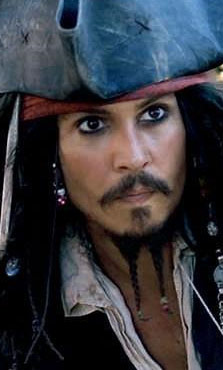
Gore Verbinski’s new chapter in the “Pirates of the Caribbean” saga—oh, yes, it’s a saga by the way—seethes and bellows with special effects that blur the line between fantasy and reality like never before. Verbinksi delights us with a navy of entirely CGI pirates, Davy Jones’ infernal crew, rendered with breathtaking artistry by hundreds of digital artists who should each get an Oscar for her work. The effects and the live photography are seamless. Every frame is crowded with details, and undoubtedly repeated viewings are required. The terrifying sea monster, the Kraken, proves that Hollywood’s digital magicians are closer than ever to making our oldest, most fantastical mythologies come alive onscreen.
And now the other shoe must drop.
The screenplay doesn’t come close to matching the dazzle of the special effects. Someday, if the art of big-budget studio screenwriting is ever revived, perhaps we’ll be treated to a movie worthy of its digital artistry. “Dead Man’s Chest” certainly isn’t. The plot is derivative, the characters thin and forgettable, and the dialogue leaden and cheerless.
The first film delighted thanks to Johnny Depp’s irreverent performance as Jack Sparrow, the Keith Richards-inspired pirate with a penchant for rum and fey attempts at skirt-chasing. So inspired was Depp’s Sparrow that he instantly reassured us that ‘Pirates’ wasn’t just studio fodder churned out for the summer multiplexes; not his mere participation, but his eager, delighted chowing-down on a morsel of a role gave the film a crucial boost.
Depp is again a spirited Sparrow, but most of the magic is gone. In the original, the notion that a single pirate could set so many wheels in motion—he was capable of anything, including single-handedly outwitting the Royal Navy and stealing one of their ships—gave the movie some larger-than-life, Errol Flynn-ish pluck. In this installment, overwhelmed by a lot of mumbo-jumbo about the massive commerical force of the East India Trading Company as the prime mover, Sparrow and his cohorts drown in the wave of history—a spurious history at that. It’s tempting to suggest that the East India Company stands in for Disney, the commercial giant showing up to turn its property into a capital ‘F’ franchise, but this numbing movie squelches that and all other lines of thinking. Its only achievement is spectacle and noise, and anyone who suggests it’s pointless to lament the bungling of a summer blockbuster clearly missed out on the joy and verve of the original. |